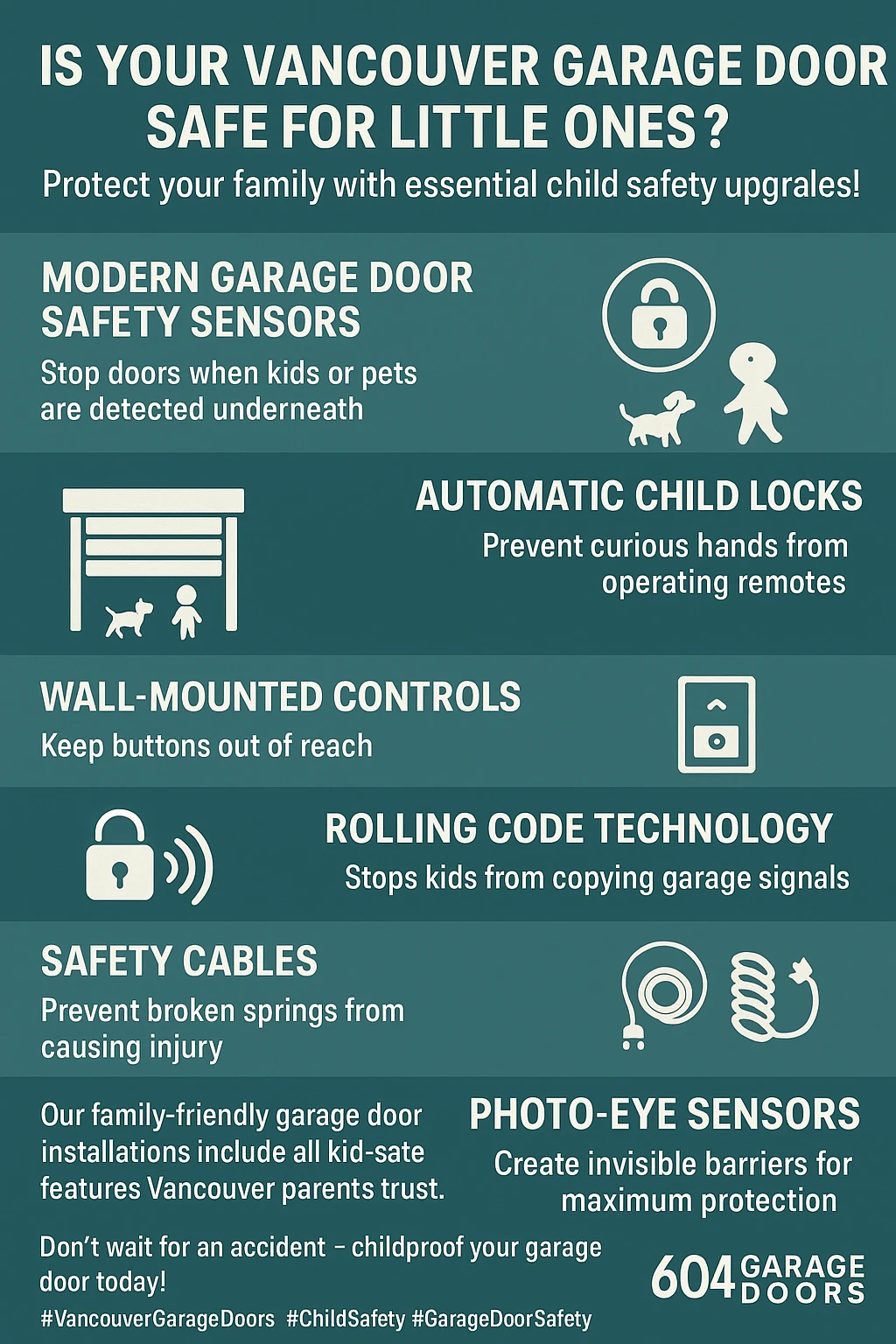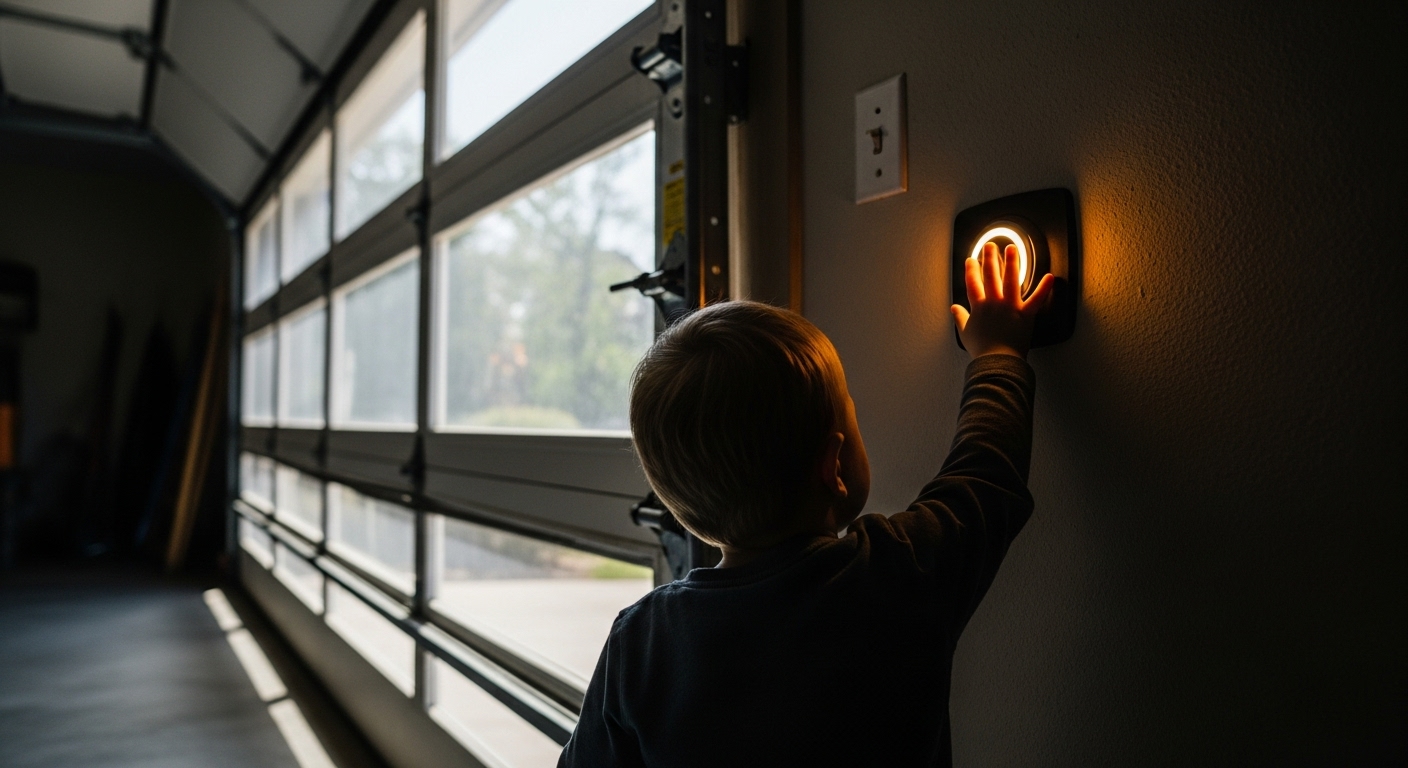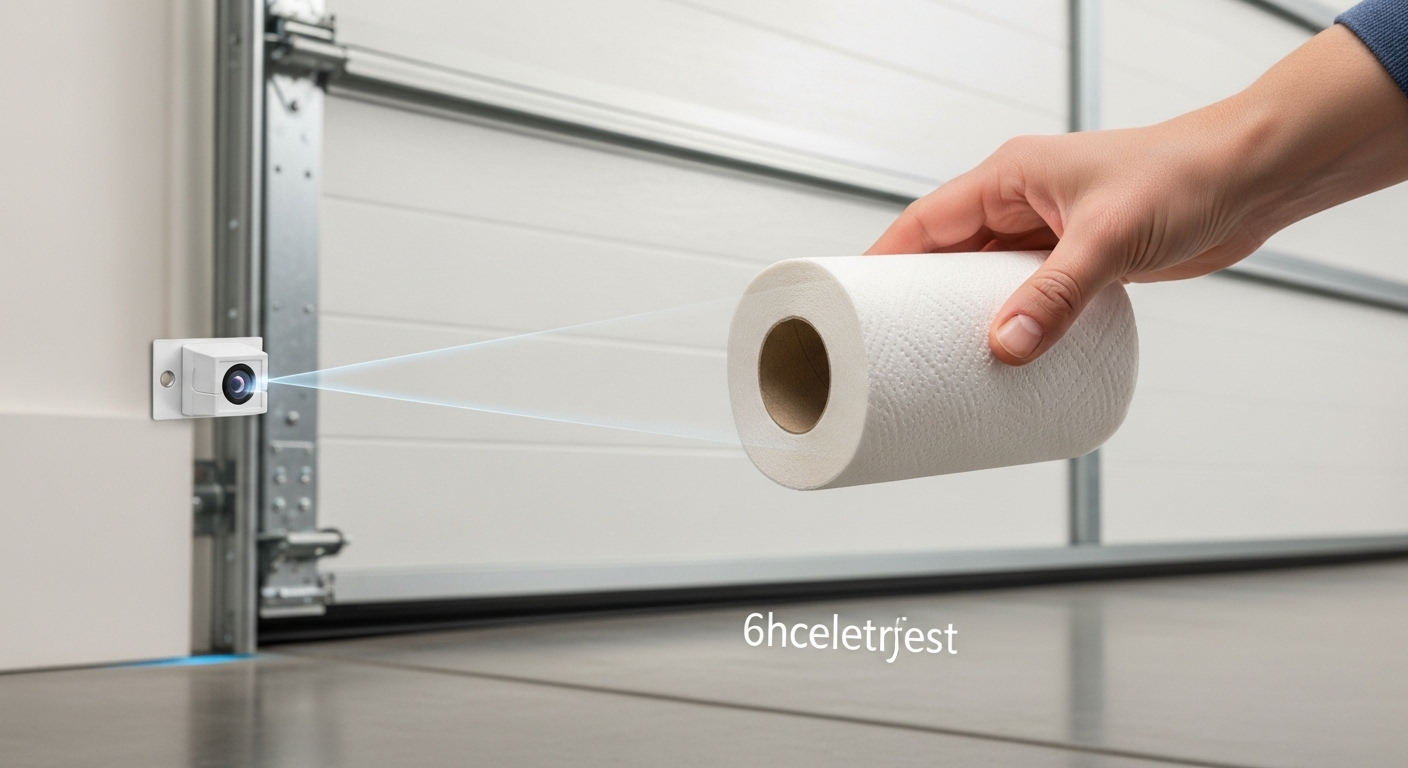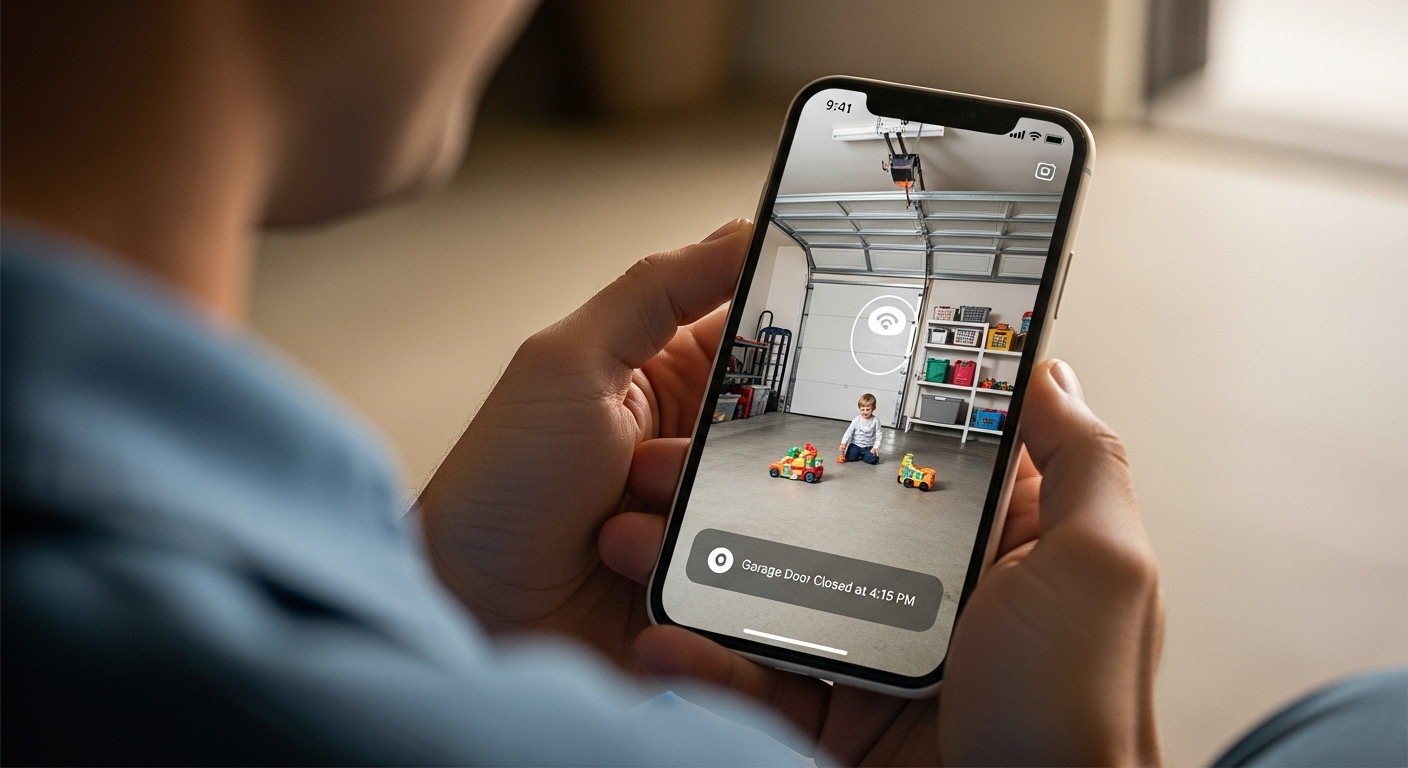Worried about your curious kids and that massive garage door looming over your driveway? You’re absolutely right to be concerned – garage doors are literally the biggest moving mechanical systems in our homes, and they can pose serious risks to little explorers who don’t understand the dangers lurking in those heavy panels, powerful springs, and automated mechanisms.
Picture this: you’re unloading groceries when your toddler darts toward the garage, fascinated by the big button that makes the giant door move. Or maybe your 8-year-old thinks it’s hilarious to “race” the closing door, trying to slide under before it touches the ground. These scenarios happen every single day in Vancouver homes, and frankly, they’re terrifying when you consider what could go wrong.
Living in Vancouver means dealing with unique challenges that most garage door safety guides don’t even mention. Our constant coastal moisture, salt air, and those lovely freeze-thaw cycles don’t just make our doors squeak louder – they actually accelerate wear on crucial safety components. That means the systems designed to protect our kids might fail faster than we expect, making proactive childproofing absolutely essential.
As parents ourselves, we get that you can’t bubble-wrap your entire home, but you absolutely can create smart layers of protection that keep your garage functional while dramatically reducing risks. Let’s dive into the essential upgrades, safety features, and rock-solid strategies that every Vancouver family needs to implement right now.
Key Outtakes:
- Modern garage doors require multiple functioning safety systems including photoelectric sensors and auto-reverse mechanisms that must be tested monthly to protect children from serious injuries
- Vancouver’s coastal climate accelerates wear on garage door components by approximately 30%, requiring more frequent maintenance than standard recommendations
- Smart garage door technology with remote monitoring and automatic alerts provides parents with real-time awareness of garage door activity and unauthorized access attempts
- Professional installation and regular maintenance are non-negotiable for child safety, as DIY repairs on high-tension components can create additional hazards
- Comprehensive childproofing extends beyond the door mechanism to include securing remotes, hazardous materials storage, and creating physical barriers in the garage environment

Understanding the Real Dangers: Why Garage Doors Are So Risky for Kids
Let’s start with some sobering reality: since 1974, at least 85 children have suffered permanent brain injuries or died from automatic garage door accidents. That’s not a typo, and it’s not ancient history. Research from medical journals shows that approximately 30,000 garage door-related injuries occur annually, with children representing a disproportionate number of victims.
The most heartbreaking part? Many of these accidents involve what experts call the “garage door game” – kids who think it’s fun to activate the door and then try to dart underneath before it closes. Your garage door weighs hundreds of pounds and operates using springs under tremendous tension. When something goes wrong, the results can be catastrophic within seconds.

In Vancouver specifically, we’re dealing with additional risk factors that most safety guides completely ignore. Our coastal climate creates unique wear patterns on garage door components. Salt air accelerates corrosion on springs and cables, while constant moisture affects the rubber seals and electronic sensors that are supposed to keep our kids safe. When these safety systems fail in our climate, they often fail without obvious warning signs.
Different garage door types present their own specific hazards too. Panel doors can pinch fingers at the joints where sections fold together. Roll-up doors create risks when hands get caught in the mechanism. Swing-out doors can strike a child who’s standing too close during operation. Understanding your specific door type is the first step in creating targeted protection strategies.
The psychological aspect is equally important to understand. Young children don’t process cause and effect the way adults do. When they see a garage door opening and closing, their developing brains focus on the fascinating movement rather than the potential for injury. They’re literally incapable of understanding why that big, slow-moving door could hurt them, which is why adult supervision and physical safeguards are so critical.
Essential Safety Features Every Vancouver Family Needs
Modern garage door safety starts with understanding the two mandatory protection systems that have been required by law since 1993: photoelectric sensors and automatic reversal mechanisms. If your garage door opener is older than that, stop reading this article and call a professional immediately – seriously, pre-1993 openers lack basic safety features and present unacceptable risks to children.
Photoelectric sensors, those little “photo eyes” mounted about six inches off the ground on either side of your garage door opening, create an invisible infrared beam across the door’s path. When anything – a child, pet, toy, or object – breaks that beam while the door is closing, the system immediately signals the opener to stop and reverse direction. This technology has prevented thousands of crushing injuries, but only when it’s working properly.
Here’s what most parents don’t know: these sensors require monthly testing to ensure they’re functioning correctly. Grab a roll of paper towels, start your door closing, and wave the roll through the sensor beam about a foot off the ground. The door should immediately stop and reverse. If it doesn’t, your safety system is compromised and needs professional attention before your kids go anywhere near that garage.

The automatic reversal system serves as your backup protection. This mechanism detects resistance when the closing door encounters an object and triggers immediate reversal. However, research reveals that while 88% of garage doors reverse when hitting a wooden block, a troubling 40% fail to reverse when encountering a child-sized mannequin. This inconsistency underscores why professional calibration and testing are so crucial.
In Vancouver’s climate, these safety systems face additional challenges. Moisture can interfere with sensor alignment, while salt air corrosion can affect the mechanical components that trigger auto-reverse functions. Local Vancouver garage door specialists recommend testing safety systems more frequently than the standard monthly interval during our wet winter months.
Force Limitation and Modern Safety Standards
Current garage door safety is governed by the ANSI/CAN/UL 325 standard, a binational safety standard that specifies force limitation requirements for garage door operators. This standard ensures that garage door motors can’t push with dangerous force that could injure a child who gets in the door’s path.
Newer residential garage door operators with smartphone closing capabilities must now include visual and audible alerts before the door moves – a crucial safety feature for preventing remote closing accidents when children might be near the door. These systems also automatically monitor the operation of safety devices and switch to safer constant-pressure operation if monitoring can’t be implemented.
If you’re considering upgrading to a smart garage door system, verify that it meets current ANSI/CAN/UL 325 standards. While the technology is incredibly convenient, it introduces new risks if not properly configured with appropriate safety protocols and alerts.
Smart Technology Upgrades for Enhanced Child Protection
Smart garage door openers represent a game-changing advancement in childproofing capability, giving parents unprecedented control and awareness of garage door activity. These systems provide real-time notifications whenever the door opens or closes, immediately alerting you if your garage door is activated when you’re not expecting it.

The monitoring capabilities are particularly valuable for families with older children who might be tempted to experiment with garage door controls. Modern smart systems can send push notifications to your phone showing exactly when the door was activated, how long it remained open, and even provide video footage of the garage area during operation.
Many current smart garage door systems include built-in cameras with two-way audio communication. This means you can see and speak to anyone near your garage from anywhere, allowing you to give immediate instructions or warnings if you notice unsafe behavior. Some parents use this feature to remind children about garage safety rules or to verify that kids have safely exited the garage before closing the door remotely.
Auto-closing functionality addresses one of the most common safety oversights: accidentally leaving the garage door open. These systems can automatically close the door after a predetermined period, eliminating the extended exposure risk that occurs when families forget to close the door after returning home.
When selecting a smart garage door opener for a family with children, prioritize systems with rolling code technology that changes the access code with each use. This prevents unauthorized access while also making it impossible for tech-savvy kids to figure out and replicate access codes.


